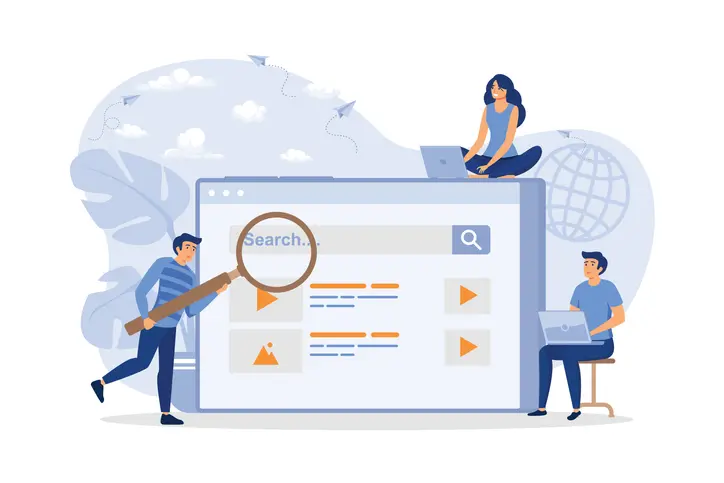The villainy of deceptive UX

When a website is not providing the results you need, it can be tempting to trick users to navigate, interact, or behave the way you need. Initially, it may work in your favor.
However, it will create animosity towards your product and brand that will ultimately turn users away permanently. Through word of mouth, unhappy customers will let others know to stay away. At worst, especially deceptive practices could result in fines and lawsuits. This form of manipulation using design is called deceptive UX.
Deceptive UX may sound like a nefarious, make-believe design-boogeyman. In design circles, it’s the equivalent of using UX design knowledge for evil rather than increasing usability. The end goal of increasing ROI may be the same, but it doesn’t pay off in the end. Eventually, users would rather avoid the product than risk doing things they didn’t intend, leaving the door open for increased user bounce rates, and room for competitors to entice them away.
Big consequences
It’s morally questionable, and it’s also legally inadvisable. Deceptive UX practices are a part of consumer rights discussions and laws. Platforms that practice in deceitful pricing or invasive privacy methods may be just the type that grabs the attention of the Federal Trade Commission- in the fines-and-lawsuits kind of way.
Your Net Promoter Score is the likelihood your customers will recommend your product. This metric can affect your customer acquisition and retention rate. On the internet, word can spread fast about negative reviews, especially if they stand out as especially frustrating. Users won’t take kindly to a product that is actively working against them and will warn others to stay away.
When cancellation is costly
It’s a common practice for subscription services to offer a free trial before charging for services. The service alerts the customer that after their trial period, they will be charged, with a reminder or two before the trial ends. What isn’t user-friendly is when the service is deliberately obtuse about its cancellation process. This includes burying the button, adding more steps than necessary, or creating a lengthy bureaucratic process to cancel.
Generally, any way to exhaust the customer from unsubscribing by dragging the cancellation process on is thoughtless at best, and illegal at worst. In some cases, companies intentionally drew out the cancellation process to charge customers for months while they waited. When businesses make locking customers into subscriptions a part of the business model, it can cost them millions of dollars in lawsuits. A service whose revenue comes from tricking and trapping customers into paying may mean there is an issue with the service itself.
Did you not want to stop receiving updates? Click yes to cancel and stop receiving zero updates
Confusing language takes advantage familiar design systems to fool users who aren’t paying close attention. Layering double negatives in place of a simple “click to unsubscribe” is an example that uses content and language.
Another example is switching where the enter button and cancel button go on a modal. If the user isn’t looking closely, they’ll hit enter instead of cancel without thinking twice. This is even more confusing and manipulative when the enter button is disguised as the cancel, and the cancel button is styled to look like the enter. The enter button is always in the same spot across all applications, so users click the same spot for confirmation or cancellation.

At best, unclear wording and deceptive systems confuses the user and discourages them from interacting with the content at all. At worst, it creates a potential violation of FTC laws surrounding deceptive and fraudulent practices. Purposefully confusing language may not get you into hot legal water, but it won’t make you any friends, either.
I know I have to put a close button on this ad, so I’ll just hide it over here where you can’t see it. Now you HAVE to use it
If a person trapped you in a building by making the exits hard to find on purpose, allowing you to leave only if you agreed to buy into their services, you might be tempted to call the authorities. Advertisements are a necessity to build awareness on the internet.
But users don’t like advertisements no matter how personalized. Users will go out of their way to install ad blockers to have a clean browsing experience. In turn, ads have become more aggressive in an attempt to get their attention. Ads and users are in an angry and ever escalating cycle. While grabbing users’ attention is increasingly harder, even with a delightful and engaging ad, creating a frustrating experience will net a negative opinion of the product and push users towards more aggressive ad blocking.
Here, let me just add this to your basket for you
When a site advertises a product at a set price, customers expect to pay that amount at checkout. However, at checkout, the customer finds extra services attached to their item they didn’t pick. Even if they may be beneficial to the customer, the seller has made that choice for them. Most people don’t appreciate having other people decide their purchases for them, especially without explicitly letting them know.
This kind of selling is a form of “Negative option billing”. Other forms of bad negative option marketing are using unclear messaging informing customers of their options, pre-check boxes affirming add-ons for the customer, and making the cancellation process difficult after getting the sale through negative option marketing.
Negative option marketing is highly regulated in most countries, if not outlawed. The FTC offers guidelines for sellers participating in negative option marketing to avoid deceptive or unfair practices that could result in fines.

Being Sneaky is Not Advised
Even if not outright illegal or susceptible to FTC act violations, deceptive UX negatively affects your Net Promoter Score, in turn decreasing your customer acquisition and retention rate. On top of this, attention drawn to manipulative practices over social media will generate negativity towards the brand in a very quick and loud way.
The road of research, iteration, and reworking your product is not the quickest and easiest way to achieve results. The benefits, however greatly outweigh deceptive and corner-cutting practices.
Resources
- Darkpatterns.org
- How do the CPRA, CPA & VCDPA treat dark patterns? | Byte Back
- Children’s Online Learning Program ABCmouse to Pay $10 Million to Settle FTC Charges of Illegal Marketing and Billing Practices | Federal Trade Commission
- Negative Options
- Noom settles billing lawsuit for $62 million and promises to change business practices to address customer complaints











